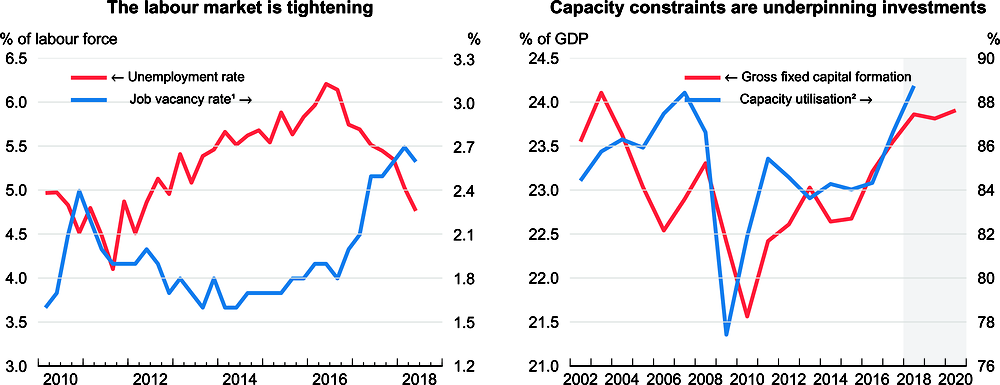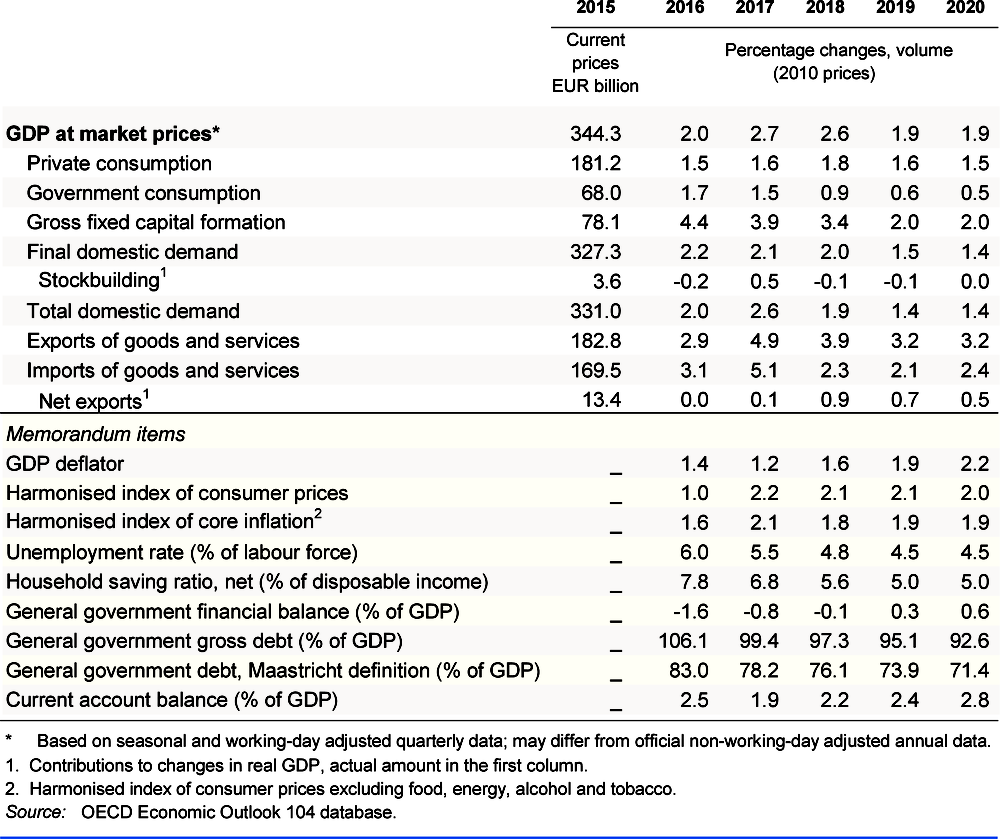Austria
Economic growth is projected to remain solid, but will slow in 2019 and 2020. A deterioration in the external environment will damp export and investment growth. Solid employment growth is fostering wage and private consumption growth. Inflation remains moderate.
Robust economic growth, a low interest rate environment and efforts to constrain government spending have helped to reduce public deficits. Nevertheless, further measures, including addressing inefficiencies in education, health care and public administration would help to address the costs of an ageing society and free up funds to better reconcile work and family life.
Robust internal and external demand underlie broad-based economic growth
A broad-based combination of internal and external drivers continues to support economic growth. Strong demand and capacity constraints on current production facilities are favouring the expansion of business investment, although skill shortages and regulatory barriers may hold back scope for productivity gains. Further reductions in the unemployment rate and high levels of job vacancies are contributing to wage growth and robust private consumption, although an inflow of foreign labour, rising participation rates of women and the elderly, and collective wage bargaining are helping to moderate the impact of the tightness of the labour market.
Structural reforms are key for greater inclusiveness and stronger long-term growth
The fiscal stance is broadly neutral with revenue growth only slightly outpacing spending increases. With a budget close to balance and low interest rates, the government debt-to-GDP ratio is falling at a steady pace. The tax burden on labour remains high relative to comparable countries, although the reform of the tax system in 2016 has helped to stimulate private consumption by reducing personal income taxation.
Impediments to full-time female employment remain high and contribute to women leaving, fully or partially, the workforce after the arrival of the first child. Addressing spending inefficiencies would help to provide funds to improve access to full-day child-care facilities and schooling. Policymakers should further consider tackling fiscal incentives to part-time work in order to raise the labour force participation of women from its current relatively low level. Productivity would benefit from strengthened competition in professions that provide services and a faster transition to digitalisation.
Economic activity is set to be less dynamic
Following the broad-based upswing in 2018, economic growth is projected to revert towards the potential growth rate of around 2% in 2019 and 2020. This reflects capacity constraints holding back production and a weaker external environment. Private consumption will remain solid. Inflation is set to slow to 2% over the coming two years. Uncertainties surrounding global trade, the euro area and Brexit could further damp exports and investment. Private consumption could surprise on the upside if the current positive sentiment persists and strong competitiveness could lead to higher-than-expected export growth.


